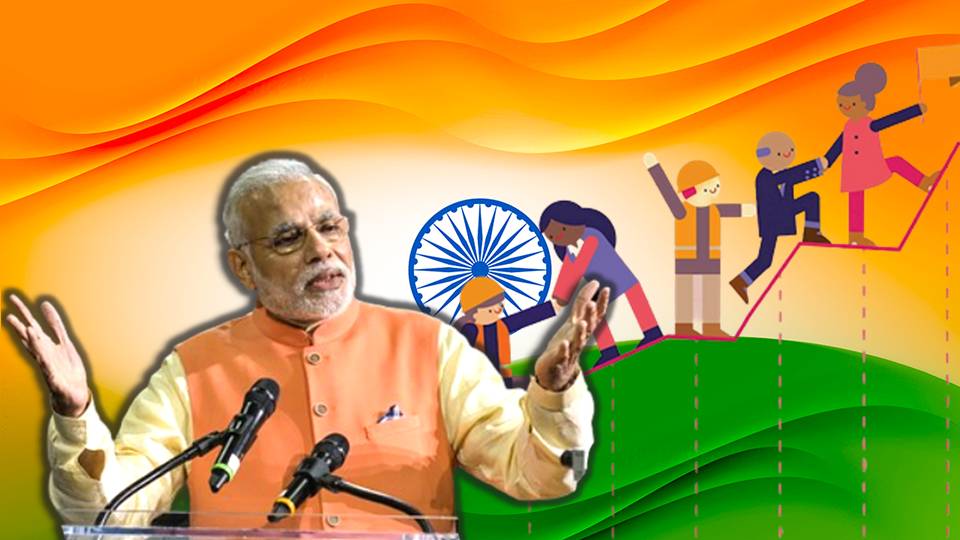Suzanna Arundhati Roy, the grandmother of the Urban Naxals in India, in her book ‘Capitalism – A Ghost Story’, called the neoliberal capitalist economic model a mutant variety of colonialism. She alleged that India’s capitalist-based economic model will worsen poverty, entrench child labour, erode democracy, and will heighten inequality.
But the successive reports refuting her communist ideas have validated India’s unique state policies. The market-driven economic model and state’s welfare policies for the poor have not only helped the country narrow the income inequality gap but also strengthened the country’s fight against the pandemic.
Income inequality dips in India: SBI
In the latest report relating to income inequality in India, SBI Research claimed that “Studies of National Bureau Economic Research in India have revealed that inequality declined during the pandemic”. The report said that “there were declines in the income of the rich attributable to the high sensitivity of business income to aggregate fluctuation”.
The reason given behind this thesis is that “labour demand for the occupations the rich occupy may have significantly declined than demand for the services provided by the poor.” Further, the pandemic has been a leveller in terms of inequality with the poor getting protected through measures such as food transfers.
Given the comparative reasoning of GDP (Gross Domestic Product) – the total market value of all finished goods and services produced within a country in a set time period and GNI (Gross National Income) – the total income generated from its residents and businesses regardless of whether they are located in the country or abroad data, SBI said “For India, the average gap between GDP and GNI was around 1.1% during FY12 to FY20. However, this gap increased marginally to 1.3% in FY21 and then 1.6% in FY22. Also, if we compare the difference from pre-pandemic levels, both GDP and GNI were 1.3% higher, indicating that income decline during a pandemic and subsequent rise was strikingly similar to output decline and then a rapid recovery. This shows that any impact on income decline was relatively short-lived during the pandemic.”
The report giving the data on the Gini Coefficient (a standard measure of income inequality in India) said, “Gini Coefficient remains constant – in the range of 0.57 to 0.58 – from Financial Year 2012 to 2021.
Further, the credit for the decline in income inequality in India has been given to the big bang formalization reforms like demonetisation, Real Estate Regulation & Development Act, 2016, and Goods & Services Act. Thus, SBI concludes that India has done quite well during the pandemic in terms of navigating income shock across deciles of the population.
Also Read: There is no market like the Indian market and no investor like Indian investors
The Saviours: Market-driven economy & welfare schemes
India’s successful fight against the Covid is attributed to its market-driven economic model and successful delivery of welfare schemes to the poor. Going against classical socialist principles, India aggressively promoted the business environment of the country.
Since coming to power in 2014, the Modi government has brought successive reform policies which built the foundation for private players to grow. The reforms like IBC (Insolvency & Bankruptcy Code), GST, RERA, Demonetizations, consolidation of 29 labour laws into four labour codes, and extending foreign direct investment to 100% in all, except the strategic sectors.
With the addition of two biggest missions that is Digital and Startup, these reforms become the foundational pillars of market expansion. It helped the country to increase its ranking in ease of doing business. Not only domestic but foreign companies too expanded their businesses exponentially in India.
The recurring effect of mass investment is – mass businesses provided labour with huge employment opportunities and these provided the base of mass consumption. Also, these increasing opportunities enhanced the purchasing powers of Indians and provided the government with good revenue resources.
Also Read: Indian stock market is becoming ‘Atmanirbhar’
An increase in resources of revenue gave the government enough budgetary support to invest both in the capital as well as its social subjects. With the formalisation of the economy, the government got sufficient resources to launch big-budget welfare schemes like universal access to electricity, sanitation, all-weather roads, internet, education, and clean cooking fuel. Further, it also provided enough room for direct benefit transfer to the poor for schemes like MGNREGA, PM KISAN, and other subsidies.
The dual policy approach of capitalism in the economy and welfare in society was foundational reform that saved the country from the severe shock of the COVID pandemic. The SBI report, which suggests that the income inequality has plunged in India during the pandemic, has also applauded these reforms made by the Modi government. So, the unique state policies of India cannot be contested by the classical liberal capitalist policies and community’s state idea. The Indian economy and society are different, and to govern them, the policies also need to be unique.
Support TFI:
Support us to strengthen the ‘Right’ ideology of cultural nationalism by purchasing the best quality garments from TFI-STORE.COM.
